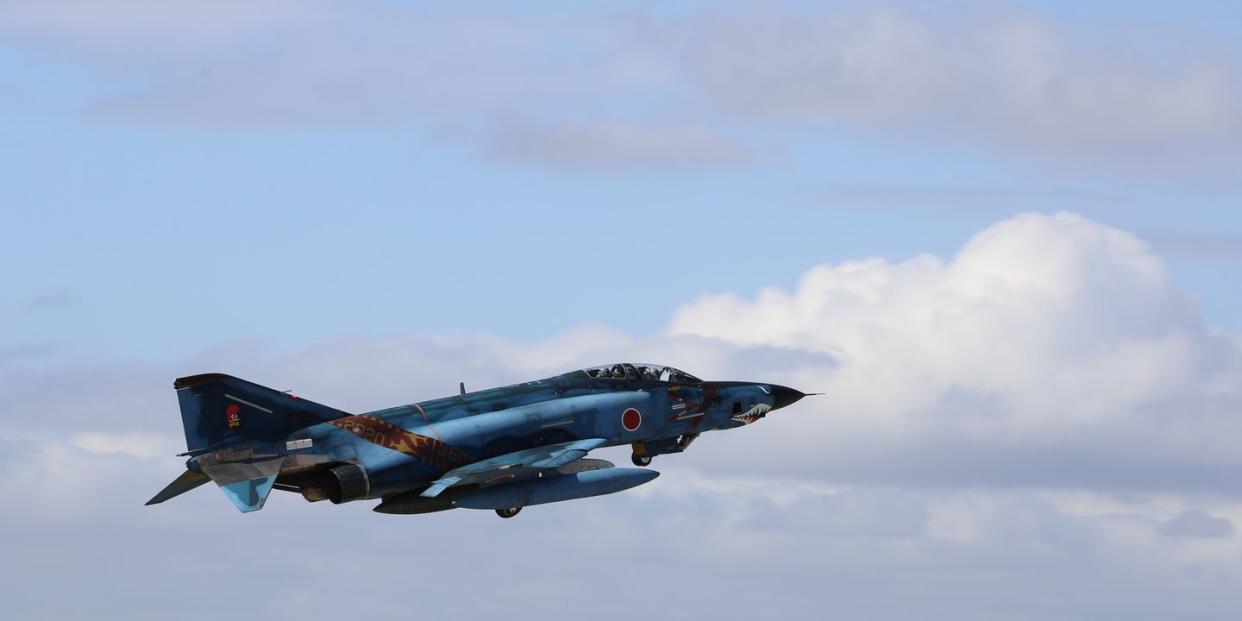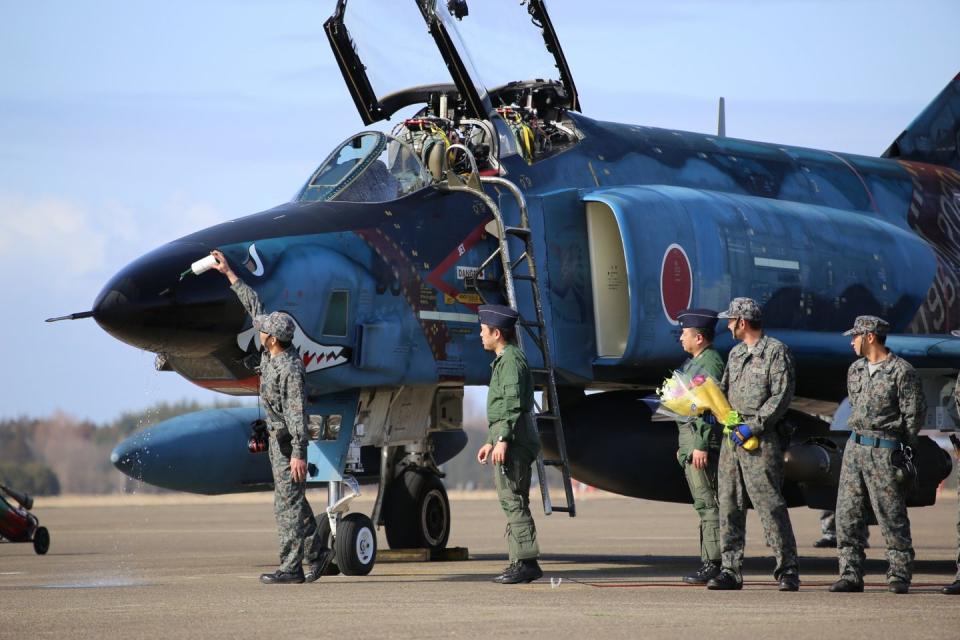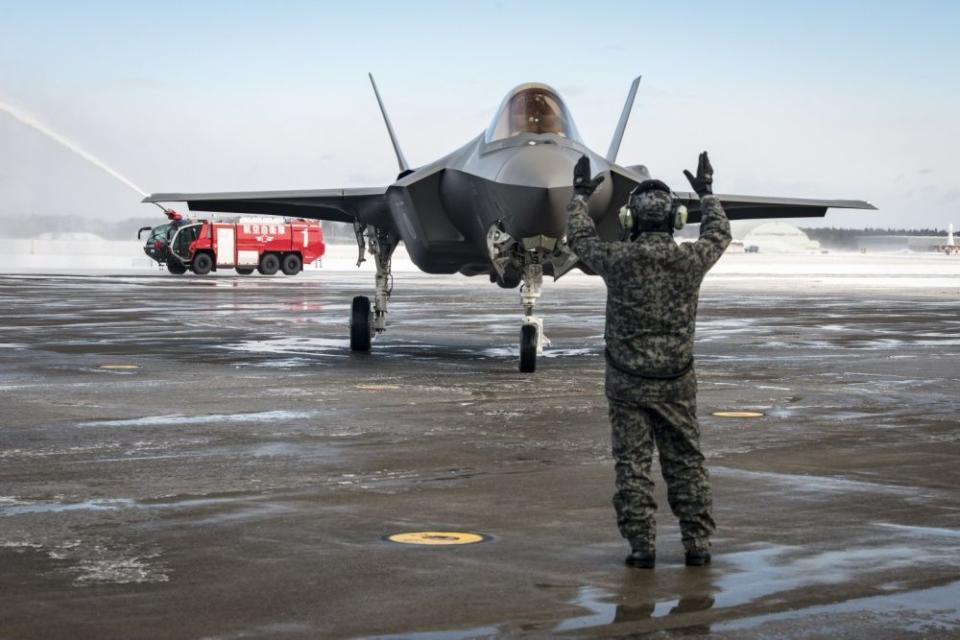Japan Says So Long to the F-4 Phantom II Fighter

Some of Japan's oldest jets, the RF-4EJ Phantom IIs, flew for the last time yesterday, days before their official retirement.
Japan has operated the F-4 Phantom II fighter jet since the late 1960s, with at least one plane still flying that's almost 50 years old.
The F-4 Phantom is being replaced by the F-35A Joint Strike Fighter, and Japan is developing a brand new fighter to fly in the mid-2030s.
Japan shed a little bit of history this week as the last of the country’s RF-4E/J Phantom II reconnaissance jets, part of a fleet that has served for more than 50 years, flew for the last time. The last six recon Phantoms flew for the last time on March 9, and the country will retire its entire Phantom fleet by the end of the year. Meanwhile, Tokyo is pursuing the development of a new fighter jet it will design with help from the U.S..
The six jets, part of the 501 Hikotai squadron, were RF-4 photoreconnaissance variants of the iconic fighter. The 501 Hikotai, based at Hyakuri Air Base north of Tokyo, was famous for adopting the American cartoon character Woody Woodpecker as its mascot, painting the bird on the squadron’s vertical stabilizers. According to The Aviationist, which covered Monday’s event, the squadron featured jets in three different camouflage styles, including Vietnam, European, and over water (above). Hyakuri Air Base also tweeted a series of gorgeous photos on Twitter:
本日午後の #百里基地。午前中の曇天が一転、輝く青空の下、#偵察航空隊 #501SQ 最後の飛行訓練が行われました。#RFー4 を導入し、百里で運用を開始してから約45年。そして部隊創設からは59年。偵空隊は年度末をもって廃止されます。感謝惜別万感。様々な思いが詰まった #ラストフライト となりました pic.twitter.com/zicAJCL5nc
— 航空自衛隊百里基地 (@jasdf_hyakuri) March 9, 2020
The McDonnell Douglas corporation developed the F-4 Phantom II, a multi-role fighter jet, in the late 1950s. The large, twin-engine, two-seat aircraft was designed to handle both air-to-air and air-to-ground missions, and served with the U.S. Air Force, U.S. Navy, U.S. Marine Corps, and the air forces of eleven other countries, including Japan. In many respects, it was a precursor to the F-35 Joint Strike Fighter. The fighter is slowly fading from service worldwide, with only three countries still flying the “Phantastic Phantom”: Japan, South Korea, and Turkey.

Japan purchased more than 150 F-4EJ fighters—12 delivered from the U.S. and 138 built under license in Japan and featuring the “J” suffix. The RF-4EJ was an unarmed version of the F-4EJ designed to fly reconnaissance missions against enemy forces on the ground. Only a handful of the original 152 jets are still in service, many replaced by the Mitsubishi F-2 fighter jet, introduced in the late 1990s. At least one jet of 1971 vintage is being used to “sniff” the atmosphere for radioactive evidence of North Korean nuclear weapons tests.
Japan currently flies these types of fighter jets: the F-15J Eagle, a Japanese version of the Boeing F-15 Eagle; the Mitsubishi F-2; the Lockheed Martin F-35A; and a small number of F-4EJ fighters. The F-4EJ fleet will retire by the end of the year, and Japan is buying 150 F-35s—including the vertical takeoff and landing F-35B version—to bolster its aging air fleet. The -B versions of the jet will be deployed on the country’s first postwar aircraft carriers, Izumo and Kaga, which are slated to receive modifications to allow them to operate fixed-wing aircraft.

Japan recently announced it would develop a replacement for the F-2 fighter with assistance from U.S. defense contractors. The new fighter, known unofficially as the F-3, will enter service in the mid-2030s. Japan constructed and flew a technology demonstrator aircraft, the X-2, but ultimately decided developing a plane entirely on its own was too expensive a venture. Lockheed Martin offered a new version of the American F-22 Raptor that would incorporate technology from the F-35, but Japan is opting to develop a completely new airplane.
There are plenty of gorgeous videos of F-4 Phantom II flight operations on YouTube. Here’s one from 2017 of air base operations at Hyakuri, featuring both RF-4 and F-4 versions of the Phantom II.
Source: The Aviationist
You Might Also Like

